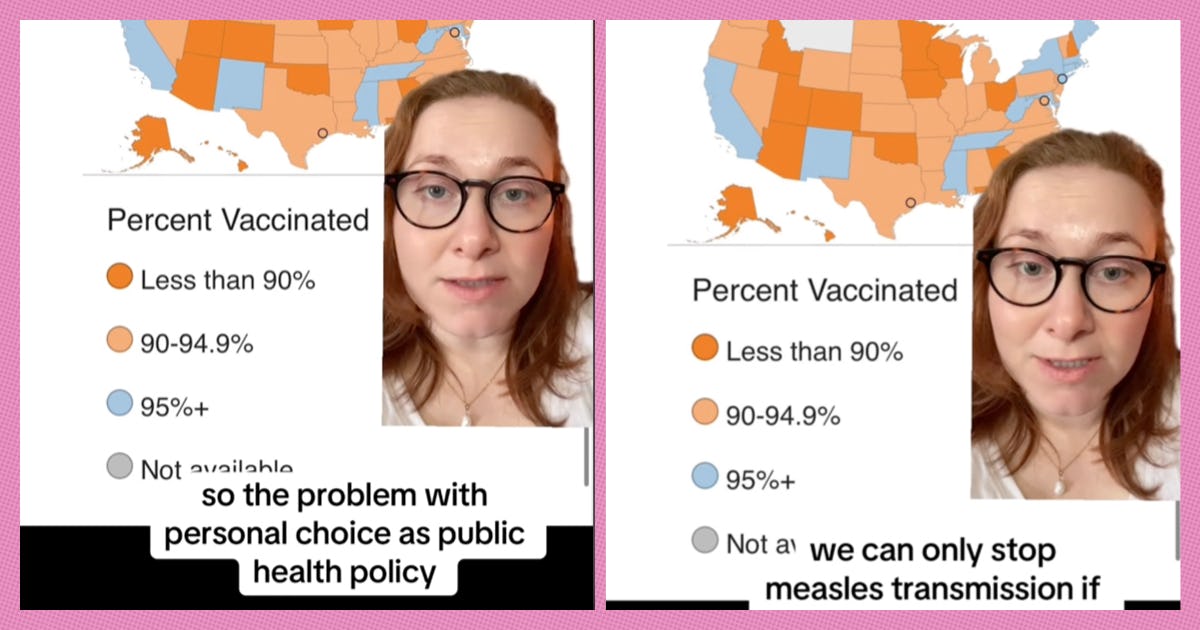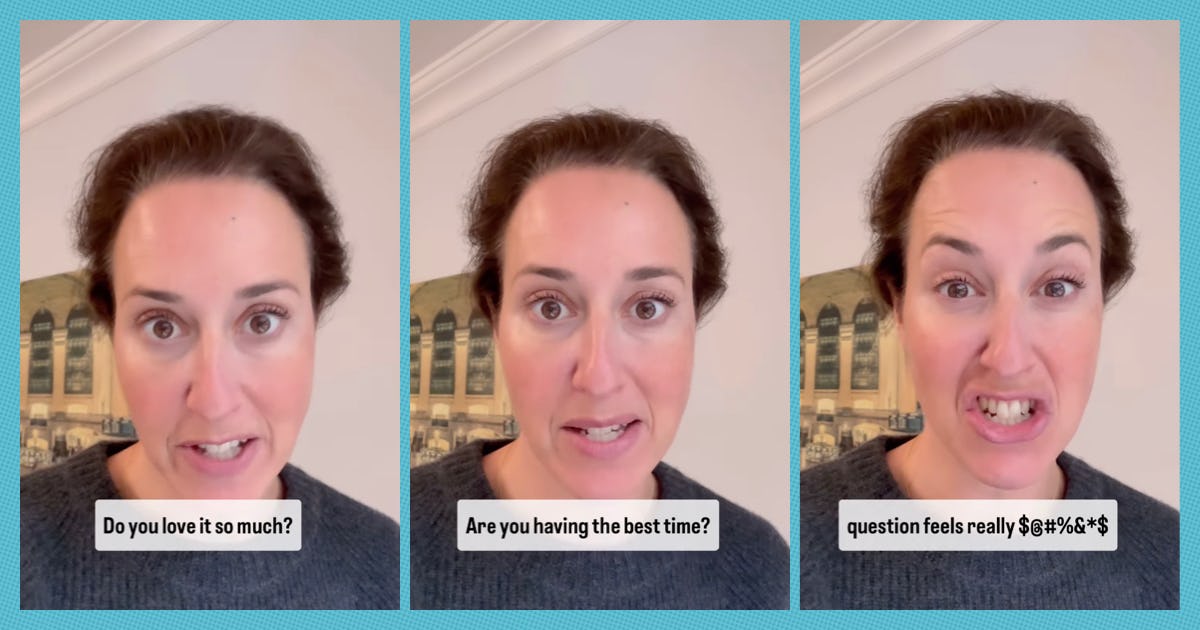The good news: Overall, the U.S. has pretty high vaccination rates. Even in states that perform below average, the vast majority of children are up to date on vaccinations as scheduled to protect them against potentially fatal diseases such as mumps, rubella and polio. But here’s the bad news: In the case of measles, 80% of states have not achieved adequate community protection, or “herd immunity.”
Kate Harmon Sibe, who posts as @kateharmonsiberine on TikTok, explained…
“The problem with individual choice as public health policy is that it doesn’t work,” they began. “For example, we can only stop the spread of measles if vaccination coverage reaches 95% or above.”
According to the Centers for Disease Control and Prevention (CDC), this is true. However, some medical institutions such as the Mayo Clinic put the number slightly lower, at 94%. In fact, nationally, the vaccination rate for measles, mumps, and measles vaccine (MMR) is slightly lower than both of these figures, at just under 93%.
In fact, during the 2023-2024 school year (the most recent data we have), only 10 states — California, Connecticut, Maine, Massachusetts, Mississippi, New Mexico, New York, Rhode Island, Tennessee and West Virginia – reached the 95%+ threshold. (Applause to West Virginia, which has a vaccination rate of 98.3%.)
Sibe continued: “Not only does this mean that healthy children will contract measles, but measles can also be fatal or disabling, which is particularly heartbreaking because it means that medically vulnerable children cannot be vaccinated against measles and they rely on all means to prevent measles.” Public school classrooms are no longer safe around children who are vaccinated to be protected. “
They note that this not only further isolates children with disabilities but also limits their educational opportunities.
In 2000, measles was considered eliminated in the United States. However, due in part to Andrew Wakefield’s 1998 study linking the MMR (measles, mumps, rubella) vaccine to autism, which has now been thoroughly debunked, vaccination rates in the United States began to decline. As of November 7 this year, there have been 16 measles outbreaks and 277 measles cases. While nowhere near pre-vaccination levels, the numbers have been increasing steadily over the years.
Before the measles vaccine became available in 1963, almost everyone would get measles by age 15.
For the vast majority of these people (again, mostly children), measles is uncomfortable and unpleasant but is unlikely to be fatal. Symptoms include high fever, cough, runny nose and, of course, the tell-tale patchy rash associated with the disease. However, it can be fatal, and with so many infections, the death toll can quickly become tragic.
From 1912 to 1922, approximately 6,000 people died from measles each year. From the 1950s to the 1960s, deaths dropped to about 500 out of three to four million cases a year, but there were still 48,000 hospitalizations and 1,000 cases of encephalitis, a dangerous swelling of the brain.
Measles remains an international killer even today: 107,500 people died from the disease in 2023, mostly unvaccinated and undervaccinated children, according to the World Health Organization (WHO).
We all want the best for our children. To ensure the health and safety of all our children, it is critical to look at data on historical and modern trends.




